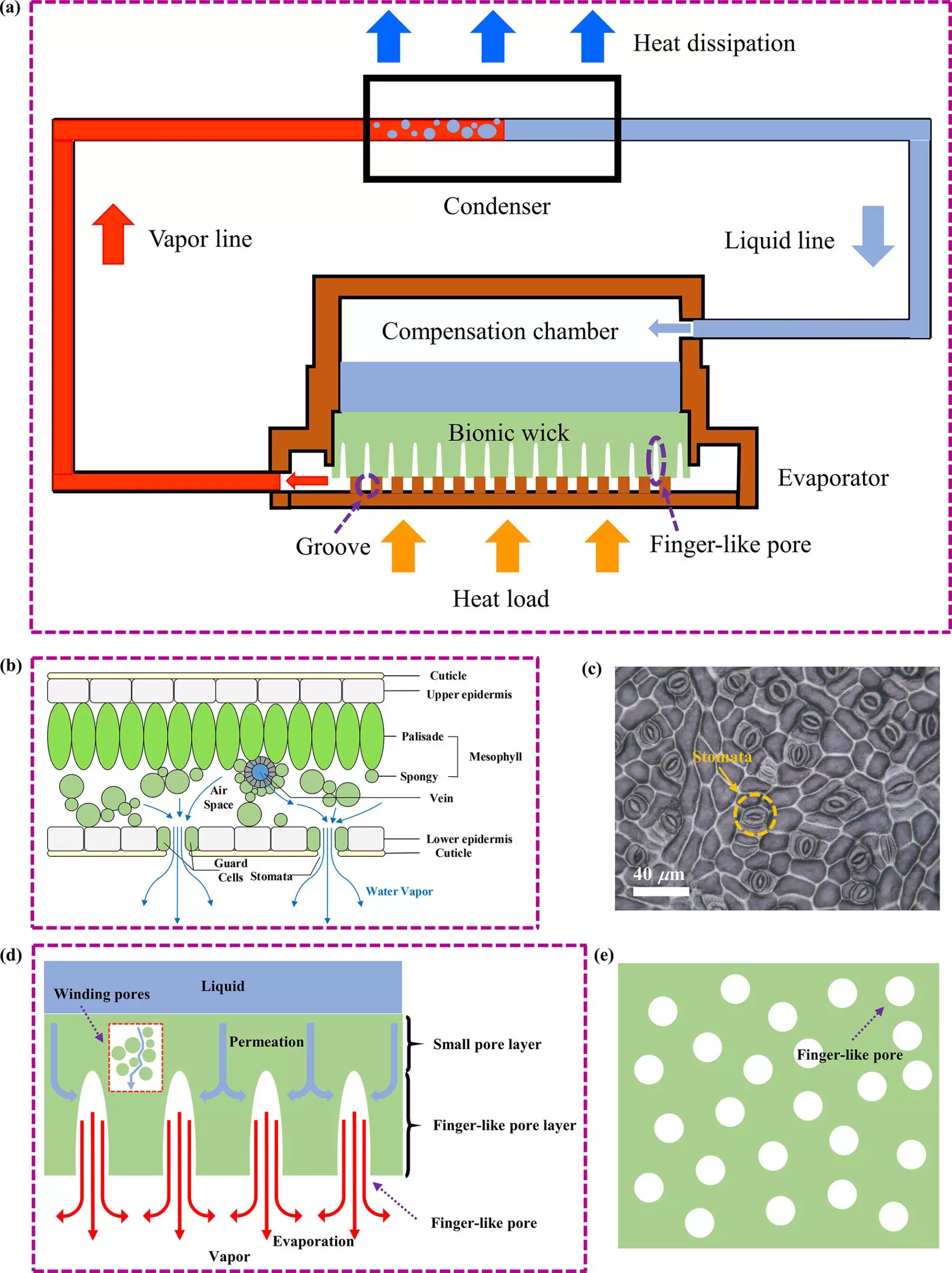In a groundbreaking study conducted by Prof. Ye Hong’s research team at the University of Science and Technology of China, a new alumina ceramic bionic wick has been developed. This wick boasts finger-like pores inspired by the stomatal array found in natural leaves, offering a unique solution to the cooling challenges faced by electronic chips as their power consumption increases.
Challenges in Designing Capillary Wicks
One of the major challenges in cooling electronic chips is the design of capillary wicks within loop heat pipes (LHPs). These wicks need to balance the requirements for flow resistance and capillary force, a task that has proven to be difficult due to conflicting needs. Larger pores are essential for reducing flow resistance for gaseous working fluids, while smaller pores are necessary to provide enough capillary force for liquid suction.
Drawing inspiration from the unique stomatal structure of plant leaves, Prof. Ye Hong’s team utilized phase inversion tape casting to create an alumina ceramic bionic wick with finger-like pore structures. These finger-like pores mimic the stomatal structure of plant leaves, effectively increasing the gas-liquid interface area. This design facilitates the timely expulsion of gaseous working fluids while reducing mass transfer resistance. Additionally, the micron-sized pores surrounding the finger-like pores ensure an ample capillary force to replenish liquid at the gas-liquid evaporation interface.
Through start-up and operational tests of the LHP, the research team confirmed the superior heat and mass transfer capabilities of the bionic wick. Not only does this innovation successfully address the conflict between enhancing capillary force and reducing flow resistance, but it also introduces a novel approach to high-power-density electronic chip cooling. The potential applications of this technology extend beyond electronic chips, showing promise in efficient thermal management for aerospace, aviation, and microelectronics fields.
The development of alumina ceramic bionic wicks with finger-like pores represents a significant advancement in cooling solutions for electronic chips. By taking inspiration from nature and utilizing innovative manufacturing techniques, researchers have successfully overcome the challenges associated with capillary wick design. This breakthrough not only improves the performance of electronic chip cooling systems but also opens up new possibilities for thermal management in various industries.



Leave a Reply